Twilight Override
„Twilight Override” is a triple album of songs centered on themes of time, aging, fear, and “making peace with something ending.” “If we’re looking at the word ‘override,’ what am I overriding?” Tweedy says. “I mean, twilight’s beautiful . . . but you need to override your fear of it.” (New Yorker)
I love this album from start to end. In these times of democracy dying in darkness and Israel‘s terrible war crimes we have a voice here that never fails. I am careful with phrases pointing to „the healing power of music“, but these songs offer some sort of consolation and elan vital, in spite of everything. There are some echoes from The Beatles to the Velvets, but the music is never bathing in nostalgia or escapism. Deep stuff, fine lyrics, songs to dive into again and again. Twilight Override will rank among my favourite song albums of 2025, along with Luminal by Brian Eno and Beatie Wolfe, Lucrecia Dalt, Jonathan Richman and few others. Don‘t forget to dance! (m.e.)
What a psychedelic sunday!
1:0 gegen Wolfsburg. Überraschende Mails von Beatie Wolfe und Sascha Staat 🎡🎶🥁… Und ein Arbeitssieg mit magischen Momenten! Mit Sascha, dem besten BVB Podcaster ever, treffe ich mich über kurz oder lang in Dortmund. Und Beatie (Eno’s companion in sound & vision) fragte an, ob wir uns vielleicht in Berlin im November treffen können. Mit meinem einstigen Hausarzt Jürgen H war ich erst bei Strobels und dann in der subtropischen „gelben Wand“. Er erinnerte mich noch mal daran, wie ich einst seine Lust an der Literatur neu entfacht hätte, mit Per Olov Enquists „Besuch des Leibarztes“. Und er erzählte von seinen fünf Wochen mit Fähre und Fahrrad im Baltikum. Yep – fantastische Stimmung beim Comeback von Schlotterbeck, der schon einen gefühlvollen Hummels-Gedächtnis-Aussenristpass im Repertoire hatte. Ansatzweise. Das war ein volles Programm heute – Flutlichtspiele liebe ich sowieso. Im Toyota lief tagsüber und abends zweimal ein Konzert der „Phaedra-Tour“ von Tangerine Dream aus dem Sommer 1974. What a psychedelic Sunday!“part of us“
Können wir wissen,
was es bedeutet, frei zu sein?
Dort, im ersten Teil von mirSteck es weg,
du primitives Tier.
Nichts zu Wildes.
Besser zurückziehen.Rufe die Götter an.
Heulend wie Messer.
Kein Lebewesen
wird es überleben.Und wir wissen,
was es bedeutet, Staub zu sein.
Beobachte ihn schlafen,
im letzten Teil von uns.„Wie eine Totenwache“ (von Shaad D‘Souza) –
Die Musikindustrie hat eine gemischte Bilanz, wenn es um Altruismus geht: Für jedes „Concert for Bangladesh“, ein durchdachtes und zeitgemäßes Projekt, das als epochales Kunstwerk Bestand hat, gibt es ein „Do They Know It’s Christmas?“, ein Lied, das von einer Handvoll reicher weißer Musiker konzipiert wurde, die offenbar davon ausgingen, dass die mehrheitlich christliche Bevölkerung Äthiopiens den wichtigsten christlichen Feiertag nicht kannte.
Ich befürchtete, dass „Together for Palestine“, eine große Wohltätigkeitsveranstaltung in der 12.500 Zuschauer fassenden Wembley Arena in London, organisiert von Brian Eno, Khaled Ziada, Khalid Abdalla und Tracey Seaward, in die letztere Kategorie fallen würde: Israel führt seit fast zwei Jahren einen umfassenden Angriff auf den Gazastreifen, und während der größten Teil dieser Zeit hat sich die Führungsriege der Musikindustrie weitgehend zurückgehalten. Viele der Musiker und Redner, die ursprünglich auf dem Programm standen, hatten in den ersten Monaten der Belagerung Israels und der unverhältnismäßig gewaltsamen Reaktion auf die Angriffe der Hamas vom 7. Oktober 2023 kaum ein Wort über Palästina verloren. Dass diese berühmten Namen fast zwei Jahre später Zeit und Energie für diese Sache aufbrachten, empfand ich als einen armseligen Versuch, das zu korrigieren, was sich wie eine Ewigkeit verdammten, verstörenden Schweigens anfühlte.
Das mag bis zu einem gewissen Grad stimmen – ich finde es immer noch beunruhigend, dass so viele, die die Macht haben, große Gruppen von Menschen zu mobilisieren, diese Macht nicht genutzt haben, bis selbst die einst so gefühllosen israelischen Falken begannen, anzuerkennen, dass die Aktionen des Landes in Gaza unmenschlich sind –, aber Together for Palestine war nicht nur eine milde Übung darin, „Liebe in die Welt zu senden” oder in Zeiten sozialer Unruhen apolitische Einheit zu predigen.
Stattdessen fühlte es sich wie eine Totenwache für die mehr als 65.000 Palästinenser an, die von Israel getötet wurden. Trotz der besten Versuche der Musiker auf der Bühne, fröhliche und beschwingte Songs zu spielen – wie zum Beispiel, als Hot Chip, Ibibio Sound Machine und der Trans Voices Chor bei ihrem gemeinsamen Auftritt auf hymnischen Diva House zurückgriffen –, war die Stimmung in der Wembley Arena zutiefst gedrückt. Jeder tapfere, erfolgreiche Versuch, das Publikum zu begeistern und uns daran zu erinnern, wie viel Macht normale Menschen haben, um Regierungen zu beeinflussen und Veränderungen zu bewirken, wurde durch die Erinnerung daran konterkariert, wie wenig Menschen im Westen, von Politikern über Journalisten bis hin zu Zivilisten, getan haben, um Palästina zu unterstützen.

In einer wohltuenden Abwechslung zu den üblichen Benefizveranstaltungen mit Staraufgebot wurde kein Versuch unternommen, so zu tun, als würden wir nicht in trostlosen Zeiten leben.
Die 25-jährige palästinensische Journalistin Yara Eid sprach über den Tod ihres „Seelenverwandten” und Kollegen Ibrahim, bevor sie eine Videomontage vorstellte, die allen palästinensischen Journalisten gewidmet war, die von israelischen Streitkräften in Palästina getötet wurden. Zeichnungen jedes Journalisten sowie Details darüber, wie und wann sie getötet wurden – oft zusammen mit Familienangehörigen oder während ihrer Berichterstattung – wurden in immer schnellerer Folge eingeblendet, bis so viele Verstorbene auf dem Bildschirm zu sehen waren, dass alles statisch wurde. Wie der Experte Mehdi Hasan uns kurz zuvor in Erinnerung gerufen hatte, zeigen Studien, dass während dieses Konflikts mehr palästinensische Journalisten getötet wurden als in Vietnam, Jugoslawien, Afghanistan und beiden Weltkriegen zusammen.
Fortsetzung und kompletter Text HIER (Pitchfork)
„Deer Diary: Hardanger ace runs with the caribou“
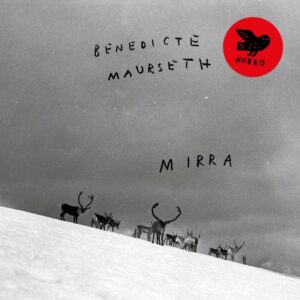
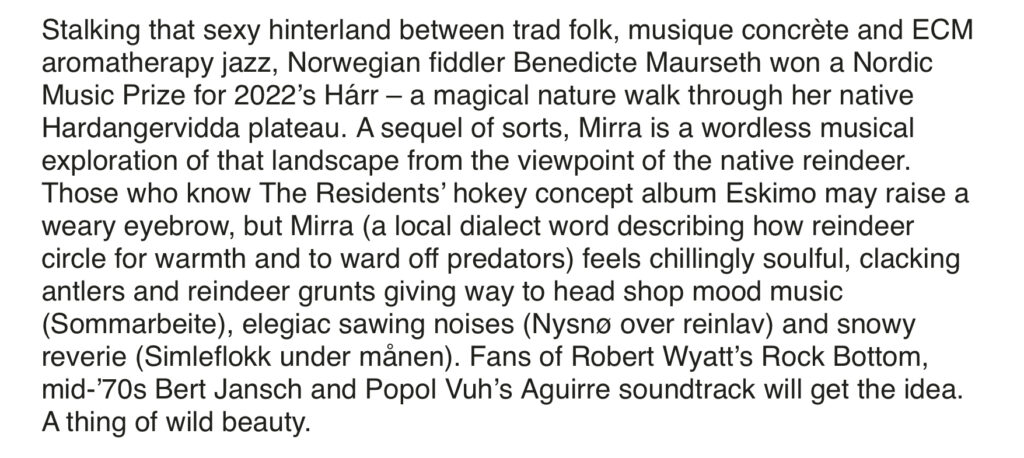
The sentence that puts a smile on my face here: „Fans of Robert Wyatt‘s Rock Bottom [one of the most heartbreakingly beautiful albums from the last 100 years; m.e.], mid-70s Bert Jansch [I saw Bert Bert Jansch solo in the summer of 1975 in the „Omnibus“, Würzburg; m.e.] and Popol Vuh‘s Aguirre soundtrack will get the idea. A thing of wild beauty.“
HERE my updated „2025 so far“-list with MIRRA jumping on no. 10!
Vamos a la playa
Bevor ich meinen eigentlichen Text schreibe, möchte ich mich bei Michael bedanken für seinen. Spanien protestiert überall gegen Israels Politik: auf dem Meer, an Land, auf den Märkten, den Strassen und an den Playas. Heute sagte Sanchez, er möchte die israelischen Sportler von allen Wettkämpfen ausgeschlossen wissen.
Mororia la defamá
Die verleumdete Frau wird sterben, niemand wird sich an sie erinnern…
Belén Álvarez Doreste singt dieses lange Gedicht „MARARIA LA FEMÉS von Rafael Arozarena. In dem Gedicht geht es um eine alte Frau, die mit Metaphern aus der kanarischen Welt beschrieben wird. Belén ist eine junge dynamische, ja explosive Künstlerin von Gran Canaria, die gerne experimentiert und eine grosse Stimme besitzt. Sie ist lesbisch, ihre schöne Freundin küsst sie lange vor dem Auftritt. Ihre Themen sind meist Frauen. Auf ihrem neuen Album singt sie über die heiligen Frauen von Gran Canaria. Das denkt man nicht, wenn man sie sieht. Ich weiss erst seit gestern, dass sie eine Frau ist. Sie trägt einen Männerhaarschnitt, Latzhosen und Baskenmütze.
Auf unserem glorreichen ersten Manatreffen auf Sylt, wollte Michael eine Band am Strand aufspielen lassen. Ich weiss nicht mehr, warum es nicht dazu kam. Es wäre ein grandioses Erlebnis gewesen.
Gestern hatte ich die Gelegenheit, Belén am Strand von La Maceta zu erleben. Sie gab ein Einzelkonzert vor dramatischer Atlantikkulisse. Als ich die Künstlerin zum ersten Mal auf grosser Bühne erlebt hatte, wurde ich augenblicklich hellhörig und hellwach wegen ihrer grossen Stimme. Gestern begann sie an der Gitarre mit lautem Gesang, bediente ihre technischen Accessoires wie Keyboard, Laptop etc.und bezog den Windton geschickt mit ein. Wir sassen am Strand, blickten auf den atlantischen Wellenteppich und hörten dem faszinierenden Sound der Belenschen Spielwiese zu. Genial! Die Kombination von Meer und Musik hat was Magisches. Diese junge Musikerin schreibt ihre Texte meist selbst, komponiert ihre Stücke im Voraus, aber auch spontan auf der Bühne, wenn sie einen guten Flow spürt. Sie ist nicht auf ein Genre festzulegen, sicher liebt sie die elektronische Musik, aber die folklorischen Klänge ihrer musikalischen Heimat versteckt sie nicht.Sie hat was von der jungen Björk, das Kräftige und das Zarte im Gesang, das Experimentelle und Basische im Ton. Über ihr erstes Album Lajalada sagt sie:“ Ich singe Lieder, die keine Lieder sind, Klänge, die Landschaften von Orten und Emotionen sind, wo der Wahnsinn wandelt.“Ich sage zu dem Auftritt von Belén: “ Gracias für die magischen Momente an der Playa von La Maceta.“
(L.N.)
„Yr“ (1/10)
Yr ist das zweite Album des amerikanischen Gitarristen und Komponisten Steve Tibbetts, das ursprünglich 1980 beim Independent-Label Frammis Records in Minneapolis veröffentlicht und 1988 von ECM neu aufgelegt wurde. Yr war Steves Eintrittskarte bei ECM. Als Manfred Eicher das Album hörte, lud er Steve T und Marc Anderson nach Oslo ein, um „Northern Song“ aufzunehmen. Die lange Reise begann. Hier eine Einstimmung auf die Klanghorizonte des Deutschalndfunks am 25. September, in der ich u.a. Steve Tibbetts’ Album „Close“ mit einem sehr interessanten Interview vorstelle (Steve ist bekanntlich einer meiner favorisierten Storyteller und „Musikphilosphen“. Downbeat schrieb zur Wiederveröffentlichung von „Ys“ 1988:
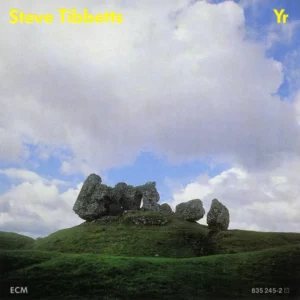
Yr kommt zu uns wie ein Artefakt aus einer verlorenen Zivilisation. Es scheint reich an Details und Geschichte zu sein, doch gleichzeitig geheimnisumwittert und von einem Hauch von Exotik umgeben. Tatsächlich ist es das Werk von Steve Tibbetts, einem Multi-Instrumentalisten, der sich wie Don Cherry, Mike Oldfield und Jade Warrior mit globaler Synthese beschäftigt. Wie Oldfield ist auch Tibbetts‘ Musik im Wesentlichen eine Ein-Mann-Produktion, bei der das Aufnahmestudio und das Tonband zu Instrumenten werden, mit denen alle Elemente gemischt und in eine fast mystische Kreation verwandelt werden.Das rein instrumentale Yr ist Tibbetts‘ zweites selbst produziertes Album und wie das erste ein Traum für Gitarrenfreaks. Tibbetts überlagert akustische und elektrische Instrumente in einer Hendrix-artigen Gedankenwelt der Produktionskunst und kombiniert oft bis zu 20 Gitarren in einem Track. Er schichtet den Klang zu atemberaubenden Gitarrenchören und komplexen Überbauten. Seine Soli sind gewundene, singende Reisen, die sich mit dem Gefühl spiritueller Erleuchtung entwickeln, das man in einem Sopranlauf von Coltrane hören würde. Nachdem er einen überschwänglichen Höhepunkt aufgebaut hat, der fast an die Belastungsgrenze geht, ersetzt er ihn durch eine klagende Akustikgitarrenpassage, die die nächste Reise einleitet.
Obwohl Yr aus acht Stücken besteht, fließen sie alle zu einer einzigen ausgedehnten Komposition zusammen, in der ein Percussion-Ensemble für Kontinuität, Farbe und Antrieb sorgt. Die beiden Tabla-Spieler halten die für indische Musik charakteristische Vorwärtsbewegung aufrecht, Während Marc Anderson eine Vielzahl von Instrumenten spielt, die der berauschenden Atmosphäre von Tibbetts‘ Kompositionen Gestalt und Ambiente verleihen. Der Effekt ist, als würde man einen nebelverhangenen tropischen Fluss hinuntergetragen, der an jeder Biegung einen neuen Anblick offenbart.
Wie schon sein erstes Album ist auch dieses komplett in Eigenregie produziert, einschließlich des geheimnisvollen Cover-Artworks und der Technik. Aber für ein Album, das mehrere Ausdrucksformen zu einem einheitlichen Ganzen verschmelzen lässt, muss man sich nicht entschuldigen. Nur Jade Warrior hat es geschafft, Musik zu machen, die so mitreißend elektrisch ist und gleichzeitig die ursprüngliche Reinheit von akustischer Folk- und internationaler Musik bewahrt. Suchen Sie dieses Album, sonst wird es eher zu einer Reliquie als zu dem lebendigen und pulsierenden Ausdruck, der es ist.
ECM albums: (Yr) – Northern Song – Safe Journey – Exploded View – Big Map Idea – The Fall Of Us All – A Man About A Horse – Natural Causes – Life Of – Close (in lockerer Abfolge eine kleine Retrospektive aller ECM-Alben von Steve Tibbetts, in der Reihenfolge ihrer Entstehung – eine exzellente Anthologie ist auch bei ECM erschienen die Doppel-Cd „Hellbound Train“)
Klanghorizonte
Auch im Jahre 2026 macht die Band Wandt Loewner Engelbrecht weiter in gleicher Besetzung – jeder mit zwei Shows zur zweitbesten Zeit um 21.05 Uhr – nur die Nacht bleibt unschlagbar.
„Wiener Schnitzel für Chris, Lloyd und Tony“
Lieber Ed!
Einen Oton aus dem Necks-Interview habe ich auf dem Blog gepostet. HIER! Dass in den Klanghorizonten am kommenden Donnerstag keiner zu finden ist, ist der alten Regel amerikanischer Filmemacher geschuldet: kill your sweetest darlings. Es hätte, da sie recht analytisch und abstrakt erzählen (blame it to my questions) – bis auf Lloyd Swanton und seine amüsant servierten Antworten zu seinen ECM-Lieblingsplatten – den „flow“ ein wenig gemindert, aber ich kann dir eins sagen: das „Triple-Album“ kommt verdammt gut rüber, wie auch die drei Konzerttermine hierzulande (die mir, was Aachen betrifft, ein paar böse Hörerbriefe einbringen könnten)….

Übrigenns nenne ich „Disquiet“ mal, mit lauter guten Gründen, das beste Dreifach-Opus der jüngsten Musikhistorie, neben Jeff Tweedys „Twilight Override“! Zu gerne hätte ich einen Song von Jeff gespielt, wie auch aus Lucrecia Dalts „A Danger To Ourselves“ , die beide auch inhaltlich gepasst hätten…. aber, siehe oben, die Sache mit den Darlings…Anbei bekommst du das Skript, und ich habe diesmal sehr, sehr viel Zeit auf die „Horizonte“ verwendet. Nun erzählt diese Stunde eine durchgehende Story mit dramatischem Indiana Jones-Auftakt und herzzerreissendem Finale (ich übertreibe, aber es stimmt trotzdem😉!) – von der Zerstörung unserer Natur bis hin zur Utopie einer anderen grünen Welt. Bitte lass das Skript nicht zirkulieren vor der Ausstrahlung – den link bekommst du automatisch…
Sehr selten, dass vier meiner „Favoriten“ – seit den letzten dreissig Jahren des vorigen Jahrhunderts (!) – in einer einzigen Stunde versammelt sind, Brian Eno, Steve Tibbetts, die Necks – und Robert Wyatt (look at the photo, „reading Robert on Sylt Island. Steve T. Has a story with that time, too, wjen he had been there, once upon a time.)

Jedem Kollegen, der sie haben will, sende ich die audio files der Antworten der drei Necks zur freien Verfügung zu! Freu mich zudem, wenn du mir von dem angekündigten Album von Ivar Grydeland (s. Cover) noch eine Promo-Cd senden kannst! Und, kleiner Tipp, diese „Klanghorizonte“ wirken viel besser, wenn du sie vorher nicht liest, ausser den Sachen zu den Necks!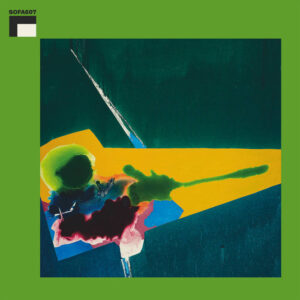
Ich freue mich total, dass das Trio Ende Oktober in meine zweite Heimat kommt. Leider spielen sie schon am kommenden Tag in Berlin. Die Drei kennen mich aus diversen „virtuellen“ Interviews – unter anderen gab es einen launigen längeren Mailverkehr zu meiner Idee, ein Doppelalbum zu machen, produced by Manfred Eicher (eine Hälfte) und Brian Eno (die andere). The thing with imaginary albums…viel hat nicht gefehlt…Du kannst den Necks gerne anbieten, dass meine Liebste und ich für sie am Nachmittag, nach dem Soundcheck, ein grandioses Essen zubereiten würden, bei uns daheim, zehn Minuten mit dem Auto vom Bunker entfernt. Es gäbe Original Wiener Schnitzel mit Bratkartoffeln, Preiselbeeren, Kapern, Zitrone!
Danke dir für alles,
Michael!
Widerfahrnis, und andere „Krimis“
„Gesänge zwischen den wogenden Schilfpflanzen am Gleisrand, begrenzt durch die Ränder des Schotters.“ Ein Satz aus den Moderationen meiner herbstlichen Klanghorizonte. „Niemandslandmusik“. Lassen wir mal die „Gesänge“ beiseite, und ob es Schilfpflanzen am Duisburger Hafen gibt: die Beschreibung könnte gut zu einer Szene aus dem Tatort „Der unsichtbare Gegner“ (***1/2 Sterne, der Nostalgiker in mir gibt deren **** ) stammen, einem Schimanski-Tatort aus dem Jahre 1982. Graues Ruhrgebiet, Götz George, herrlich polternd und sinnierend mit Tanner an seiner Seite, bevor auch „Schimi“ irgendwann seinen rauen Charme ausgereizt hatte. Diese Duos im Tatort haben bei mir mitunter eine rasche Verfallszeit, oder sie werden „Kult“, was fast noch schlimmer ist. Bei den Münsteranern bin ich rasch ausgestiegen, der Witz war auf Bud Spencer – Terence Hill – Niveau für Intelektuelle gesunken, die Drehbücher wurden immer mehr zum Pointenlieferanten.
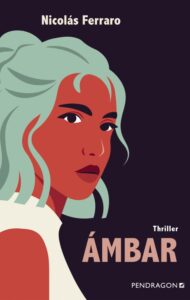
Als ich ein paar Tage allein war mit unserer Pflegetochter (die Schule hat wieder angefangen, und sie möchte im Herbst 10 Tage in ein nicht ganz so ungefährliches Land fliegen, was wir nicht so toll finden), stöberte ich abends, wenn ich nicht gerade an meiner Sendung feilte oder in Nicolás Ferraros Thriller und Coming-of-Age-Roman „Ambar“ versank (diese junge Frau hat‘s auch nicht leicht!), huschte ich durch Tittelbachs TV-Seite und entdeckte zwei Tatorte (neben dem „Schimanski“ noch „Der oide Depp“ mit den beiden Münchnern, bei denen nun auch Schluss ist: das sind zwei Tatorte, die so gut sind, dass man sie auch nach Jahren gerne noch einmal sehen kann, und einen exzellenten „Polizeiruf 110“, einen der besten mit Claudia Michelsen, namens „Widerfahrnis“. Ein eindringliche dunkle Geschichte, die nachwirkt. Wie „Der oide Depp“ (****1/2) ist auch „Widerfahrnis“ (*****) eine cold case-Story mit zwei Zeitebenen, die feinsinnig verwoben werden. Und beide enden mit einer „romantische Volte“, ohne jeden Hauch von Kitsch. A propos Tittelbach: mir sind da die Besprechungen oft zu positiv, wie zuletzt bei einem der „bretonischen Krimis“ , wo die Figuren alle so melodramatisch „überperformen“ in Gestik und Mimik, als hätten sie einen Peter Lorre-Gedächtnis-Kurs hinter sich.(m.e.)